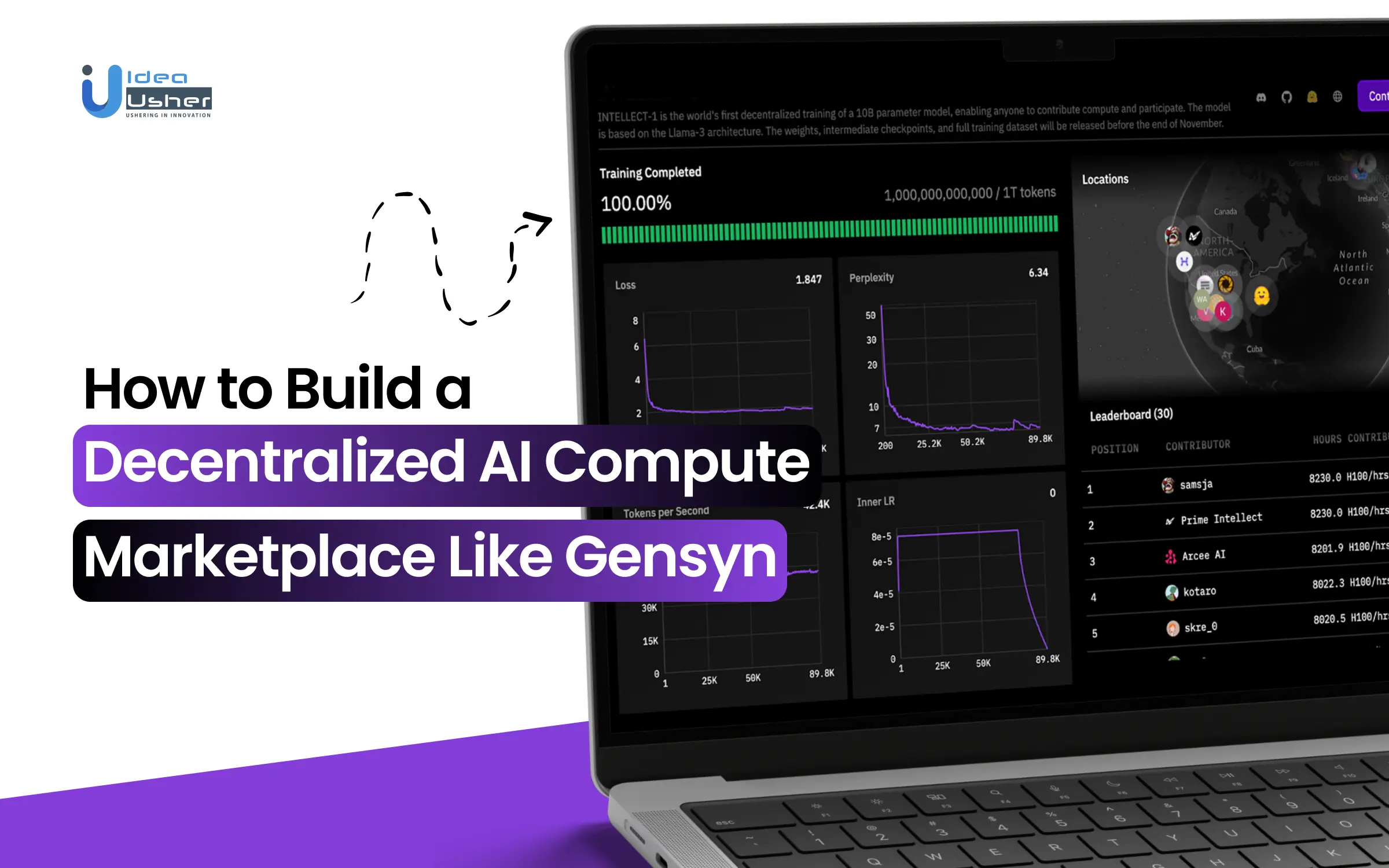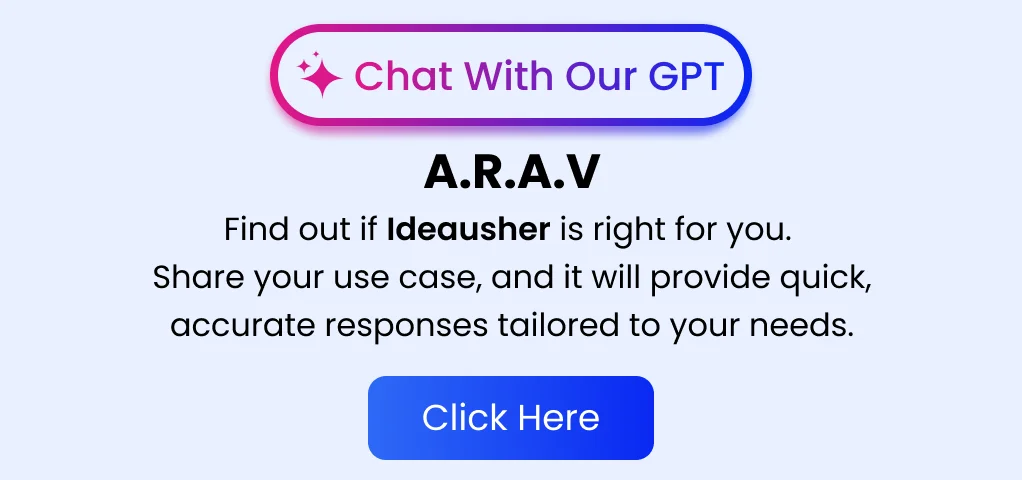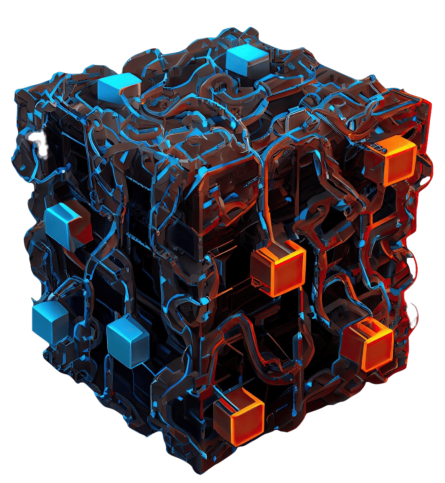As AI continues to grow, so does the need for massive computing power, but not everyone can afford the high costs of traditional providers. That’s where decentralized AI compute marketplaces like Gensyn come in. These platforms let businesses tap into distributed computing resources, making it more affordable and scalable.
It’s like sharing the load with a network of people instead of relying on one big server. For businesses, it means accessing powerful AI tools without breaking the bank, and for the tech world, it’s a step toward a more open, democratized way of using AI.
We’ve collaborated with cutting-edge startups to integrate blockchain technology and decentralized computing into AI infrastructure, ensuring scalability and affordability without compromising security. IdeaUsher has crafted decentralized systems that empower users to rent AI compute resources in a trust-minimized way. Our goal with this blog is to share what we know, helping you build a platform that democratizes AI access just like Gensyn and leverage this growing market.
Key Market Takeaways for Decentralized AI Compute Marketplace
According to FortuneBusinessInsights, the decentralized AI compute marketplace is seeing rapid growth in 2025, with blockchain-based AI activity rising sharply by 86%. Millions of wallets are now engaging with decentralized AI applications, and the market, valued at $12.2 billion in 2024, is expected to reach $39.5 billion by 2033. This growth is driven by the increasing demand for more affordable, scalable, and censorship-resistant AI infrastructure.
Source: FortuneBusinessInsights
Key platforms like Akash Network and Render Network are making it easier and cheaper for developers to access GPU resources for AI training, offering alternatives to expensive centralized cloud services. io.net is another standout, providing access to over 25,000 nodes worldwide and cutting GPU costs by up to 90%.
Other platforms, such as Gensyn and SingularityNET, are pushing the boundaries of decentralized AI with new models for collaboration and tokenized data.
Strategic partnerships are playing a crucial role in accelerating adoption. io.net’s partnership with Matchain is providing affordable GPU resources to Web3 developers, while Kite AI and GAIB are building a marketplace for AI infrastructure. Meanwhile, the collaboration between Dfinity Foundation and SingularityNET is promoting the integration of open AI models into decentralized applications, ensuring more accessible and transparent AI solutions.

What Is a Decentralized AI Compute Marketplace?
A decentralized AI compute marketplace is a platform that leverages blockchain technology to connect individuals or organizations with idle computing resources (like GPUs/CPUs) to AI developers who need computational power for training AI models. This model is different from traditional cloud-based solutions such as AWS, Azure, or Google Cloud, offering a peer-to-peer network where providers rent out their unused hardware.
The key distinctions lie in its approach to cost, control, fault tolerance, and censorship resistance, offering a decentralized alternative that addresses several pain points in the AI development ecosystem.
Primary Goals of Decentralized AI Compute Marketplaces:
- Democratize AI development by reducing the cost barrier for AI researchers and startups.
- Monetize idle hardware, such as GPUs or data center resources that are often underutilized (e.g., crypto miners, gaming rigs).
- Eliminate centralized control and single points of failure, unlike traditional cloud service providers (AWS, Azure, etc.).
How does it differ from Centralized Cloud Computing?
| Feature | Decentralized AI Compute (e.g., Gensyn, Akash) | Centralized Cloud (AWS, Azure, GCP) |
| Cost | Cheaper (competitive pricing) | Expensive (vendor lock-in) |
| Control | User-owned, permissionless | Corporate-controlled |
| Scalability | Global, distributed resources | Limited to provider capacity |
| Fault Tolerance | High (no single point of failure) | Dependent on provider uptime |
| Censorship Resistance | Yes (decentralized governance) | No (corporate policies apply) |
Key Components of a Decentralized AI Compute Marketplace:
- Compute Providers: These are individuals or organizations that offer their idle GPUs or TPUs for rent. This can include crypto miners, data centers, or even individuals with gaming rigs.
- Verifiers: They ensure that computations are done correctly by using cryptographic mechanisms or probabilistic proofs, such as the “probabilistic proof-of-learning” used by Gensyn. Verifiers help prevent fraud and ensure fair computing practices.
- Orchestrators: These are responsible for managing smart contracts that match AI developers (clients) with suitable compute providers. They handle the distribution of tasks, ensure payments are made, and penalize non-compliant parties.
- Clients (AI Developers): AI developers submit their machine learning jobs (e.g., training a model with TensorFlow or PyTorch) to the marketplace. They pay for the computing power using cryptocurrencies or tokens.
Types of Decentralized Compute Marketplaces
Decentralized compute marketplaces come in a few types: some use idle GPUs for tasks, others enable collaborative AI model training with local data, and some focus on secure, AI-specific tasks using smart contracts.
1. Proof-of-Work-Based Compute Networks:
Example: Render Network (RNDR)
In Proof-of-Work-based Compute Networks, miners contribute their idle GPUs to perform tasks such as image rendering or running AI computations. In return for their contribution, they earn tokens as a reward.
However, this approach is energy-intensive and not specifically optimized for AI workloads, making it less efficient compared to other decentralized compute models tailored for AI tasks.
2. Federated Learning-Based Compute Systems:
Example: FedML
In Federated Learning-Based Compute Systems, AI models are trained collaboratively across multiple devices while keeping the data local to each device. This decentralized approach ensures that sensitive data doesn’t need to be shared, enhancing privacy.
It is particularly well-suited for privacy-conscious AI applications, such as those in healthcare or finance, where data privacy is paramount.
3. Blockchain-Native Compute Protocols:
Example: Gensyn, Akash Network
Blockchain-Native Compute Protocols are designed specifically for AI/ML workloads. They use smart contracts to allocate tasks and cryptographic proofs to ensure computations are done correctly.
These protocols offer advantages like security, scalability, and low-cost AI training, making them ideal for machine learning tasks.
Overview of the Gensyn AI Compute Marketplace
Gensyn is built around a decentralized network for AI training, making the process more efficient, secure, and cost-effective. Here’s how it all comes together:
- Task Submission: Developers submit machine learning tasks, like training a model, specifying exactly what kind of compute power they need. These tasks are then packaged into containerized workloads, making them easy to run across different providers.
- Compute Matching: A smart contract-based scheduler takes care of matching tasks with the right compute provider based on factors like price, hardware specs, and latency.
- Distributed Execution: The workload is split up and processed across multiple GPUs, using familiar frameworks like PyTorch or TensorFlow.
- Result Verification: To make sure the computations are correct, Gensyn uses cryptographic proofs, and once verified, the system automatically triggers payments.
1. Peer-to-Peer Task Distribution
Unlike centralized cloud services, Gensyn assigns tasks dynamically based on real-time conditions:
- Dynamic Task Routing: Jobs are routed based on available providers and network status.
- Geographical Optimization: Tasks are placed closer to data sources to minimize delays.
- Bid/Ask Marketplace: Providers can set their prices via smart contracts, making the marketplace more competitive.
2. Consensus and Verification Layers
Gensyn combines on-chain and off-chain verification:
- On-Chain Consensus: The blockchain records job assignments and payments.
- Off-Chain Verification: Cryptographic checks ensure results are accurate, all without re-running jobs from scratch.
3. Tokenomics & Economic Incentives
Gensyn incentivizes good behavior by rewarding providers with tokens for completed tasks. If providers stake tokens for longer periods, they get additional bonuses. Plus, reliable providers build reputation scores, which help them earn even better rewards over time.
Bad actors face penalties:
- Slashing: Providers lose their staked tokens if they’re caught cheating.
- Blacklisting: Repeat offenders can be banned temporarily.
Disputes can be resolved with bonds, adding an extra layer of fairness.
4. Verde & Reproducible Operators (RepOps)
Verde, Gensyn’s verification engine, ensures that the computations performed across the network are trustworthy, even in an untrusted environment. RepOps makes sure that results are reproducible by controlling randomness, standardizing floating-point operations, and resolving issues related to stateful computations.
5. Probabilistic Proof-of-Learning (PoL)
Instead of re-running an entire job to verify it, Gensyn uses a probabilistic method. Tasks are split into chunks, and a small random sample is verified. If those samples pass, the entire job is accepted—this is far more efficient than traditional methods, saving time and cost.
6. Research Projects: CheckFree and NoLoCo
Gensyn has developed projects like CheckFree and NoLoCo as part of their research to enhance their decentralized AI compute network. These innovations are backed by academic papers detailing the team’s methodologies and are available for public use as open-source projects.
- CheckFree: Traditional ML training relies on frequent checkpoints, which slow down processes. CheckFree solves this by allowing training without storing every model state, cutting down on storage needs by 90%.
- NoLoCo: ML frameworks often need perfect network conditions, but NoLoCo allows training to continue even when nodes drop out, speeding up training in less reliable networks.
7. Layer 1 Protocol Architecture
Gensyn’s custom blockchain layer is optimized for machine learning, focusing on fast transactions and low-latency verifications. The system is built on clear roles:
- Clients: Submit and pay for tasks.
- Providers: Offer the computing power.
- Verifiers: Validate results.
- Arbitrators: Handle disputes.
The platform integrates with other technologies, like Polkadot for security, Ethereum for liquidity, and IPFS for storage, ensuring smooth interaction across the ecosystem.
Why Companies Are Turning to AI Compute Marketplaces?
Companies are turning to decentralized AI compute models because they offer lower costs, faster scaling, and less reliance on traditional cloud providers. This model provides access to underutilized GPUs globally, cutting expenses significantly. Plus, it removes the bottlenecks and risks tied to single-vendor dependencies.
- Escalating GPU Costs & Supply Chain Disruptions: With the cost of GPUs like Nvidia’s H100 soaring and long wait times, companies struggle to meet computational demands. Decentralized compute networks offer access to underutilized GPUs at a fraction of the price.
- Democratizing AI Compute Infrastructure: Decentralized networks break down access barriers for emerging markets and research institutions, offering global access to computing power without corporate approvals or credit checks.
- The Rise of Verifiable, Trustless Systems: As AI faces scrutiny for transparency, decentralized platforms provide verifiable, trustless computing through blockchain-based verification, ensuring data integrity and compliance.
- Capital Efficiency & Competitive Advantage: Traditional AI infrastructure requires millions in investment, while decentralized models offer low startup costs, faster scaling, and a pay-as-you-go model for capital efficiency.
Financial Comparison:
| Requirement | Traditional Approach | Decentralized Model |
| Initial Investment | $10M CapEx | <$100K Setup |
| Time to Scale | 6-12 months | 24 hours |
| Ongoing Costs | $300K/month | $50K/month |

Benefits of Building an AI Compute Marketplace for Businesses
Building a decentralized AI compute marketplace allows businesses to cut costs by accessing underutilized resources globally, without being tied to expensive cloud providers. It offers flexibility and scalability, allowing rapid expansion without large upfront investments.
Technical Benefits
- Trust-Minimized Verification of ML Results: Gensyn’s protocol uses cryptographic proofs to verify machine learning outcomes without relying on centralized authorities. This ensures mathematical correctness, with a detection rate of over 99.9% for incorrect computations, enforcing honesty across the network.
- Fault-Tolerant, Network-Resilient Architecture: Gensyn’s network automatically switches to alternative providers during disruptions, maintaining 85-90% throughput during network partitions, and continues to operate even with 30% of nodes offline.
- Cost Efficiency vs. Cloud Monopolies: Decentralized AI compute offers a 72% cost savings compared to cloud providers like AWS, providing more GPU memory and flexibility with pay-as-you-go models instead of long-term commitments.
- Framework Agnostic Flexibility: Gensyn supports major ML frameworks like PyTorch and TensorFlow, with custom containers for specialized workloads, providing flexibility for diverse AI applications.
Business Value Proposition
- New Revenue from Idle Compute: Data centers, crypto miners, and research labs can generate new income by renting out underutilized resources. A European mining operation earned $18,000 per month by renting idle GPUs during bear markets.
- Global Compute Sourcing at Scale: Decentralized networks offer access to more GPUs than private clusters, providing cost-effective geographical arbitrage and flexibility to mix providers based on price and performance.
- Transparent, Auditable Operations: Blockchain enables immutable training logs, smart contract-based billing, and real-time cost tracking, streamlining financial management and ensuring regulatory compliance.
- Accelerated Development Cycles: Decentralized compute allows for quick deployment and elastic scaling, reducing devops overhead and enabling faster development cycles.
How to Build a Decentralized AI Compute Marketplace Like Gensyn?
We specialize in building decentralized AI compute marketplaces designed to meet the unique needs of our clients. By leveraging the power of blockchain and distributed technologies, we help businesses access affordable, scalable, and secure AI computing resources. Here’s how we approach the process of developing a custom AI compute marketplace:
1. Define Network & Architecture
We begin by selecting the right compute verification model for your platform, ensuring the system can verify AI tasks with accuracy. Then, we determine whether to integrate a custom Layer 1 blockchain for full control or use an Ethereum-compatible network for easier integration with other systems.
2. Build Compute Distribution Protocol
Our team designs the task assignment system to make sure AI jobs are matched with available compute providers efficiently. We create a peer-to-peer network for global provider onboarding, and we build in redundancy and fallback mechanisms to ensure the system stays operational, even if some nodes experience issues.
3. Implement Verifiable Training Protocols
We integrate reproducibility frameworks like Verde to ensure that AI training results are consistent and accurate. By adding Reproducible Operators (RepOps), we make sure that your computations are deterministic. We also implement a proof validation system that guarantees the reliability and correctness of each task executed on the network.
4. Design Incentive & Token Economy
To motivate providers and ensure fairness, we build a token economy with reward distribution, staking, and slashing rules that fit your platform. Our team designs dynamic pricing models to match supply and demand, and we integrate liquidity solutions like DEXs and stablecoin bridges to streamline payments.
.5. Developer Tooling & API Interfaces
We focus on providing a seamless experience for developers by creating user-friendly CLI tools for providers and SDKs for machine learning engineers. Additionally, we develop a web dashboard for clients to easily manage their compute jobs, track progress, and monitor costs, ensuring smooth interactions with the platform.
6. Launch Testnet
Before going live, we run a testnet to ensure that task submissions, validation processes, and dispute resolutions work as expected. We incentivize early node operators to help improve the system and partner with machine learning projects for pilot programs to test real-world functionality and gather feedback.
Overcoming Challenges in Decentralized AI Compute Marketplaces
After working with numerous clients, we’ve encountered common challenges in the decentralized AI compute marketplaces. From ensuring training verifiability to handling network failures and incentivizing honest behavior, we know how to tackle each issue.
Challenge 1: Ensuring Training Verifiability
In traditional machine learning training, results are often non-deterministic due to variations in floating-point arithmetic across GPUs, random operations like dropout layers, and hardware-specific optimizations.
Proven Solutions
- To overcome this, we use Deterministic Operators (RepOps), which standardize floating-point implementations and control random number generation seeds. This ensures that results are consistent, with less than 0.01% variance across different GPUs.
- We also implement Probabilistic Proof-of-Learning by randomly sampling 5-10% of computation segments and using cryptographic hashing to validate results with 99.9% confidence, making the process 13.5x faster than full replication.
Tip: Start with critical layers like attention mechanisms in transformers before applying full determinism.
Challenge 2: Fault Tolerance in P2P Networks
In real-world deployments, decentralized networks experience node dropout rates of 15-25%, variable network latency, and storage inconsistencies.
Battle-Tested Approaches
- We implement CheckFree-style Redundancy, where partial results are recomposed algebraically, allowing the system to complete work with just (n+1)/2 nodes.
- Decentralized fallback systems using IPFS for checkpoint storage and geographically distributed verifiers allow for automated task reassignment in under 90 seconds.
Challenge 3: Incentivizing Honest Behavior
In decentralized environments, providers may be tempted to submit false results, collude, or game reputation systems to reduce costs or manipulate outcomes.
Cryptoeconomic Solutions
- We use Bonded Staking (requiring a $10k-$50k stake per GPU) to reduce fraud by 92%, combined with Slashing, which deducts 50-100% of a provider’s stake for faults, deterring 99% of bad actors.
- Delayed Payments with dispute windows of 24-72 hours catch 85% of fraud attempts. Additionally, Reputation Scores with exponential decay for failures improve reliability by 40% annually.
Pro Tip: Implement progressive staking to increase stakes for more valuable jobs, further encouraging honest behavior.
Challenge 4: Reducing Communication Overhead
In traditional distributed ML, synchronous all-reduce operations, frequent checkpointing, and gradient synchronization delays create significant communication overhead, slowing down training.
Decentralized Optimizations
- We use the NoLoCo Protocol, which allows asynchronous weight updates and tolerates 200-300ms latency variance, making it 5.8x faster than traditional systems like Horovod in unstable networks.
- Checkpoint-Free Training eliminates the need for frequent checkpoints by using algebraic signatures for state recovery, reducing I/O overhead by 70-90% and enabling continuous training across sessions.

Key Tools for Building a Decentralized AI Compute Marketplace
To build a decentralized AI compute marketplace, a robust infrastructure stack is necessary. Here’s a breakdown of the core tools and technologies that can help you create an effective and scalable system.
1. Blockchain Infrastructure Stack
| Feature | Substrate Framework | Cosmos SDK (Alternative) |
| Modular Blockchain Development | Customizable for specific AI marketplace needs. | Offers pre-configured modules for easier setup. |
| Built-in Staking/Consensus | Supports PoS for governance and incentivization. | Uses Tendermint for fast, efficient PoS consensus. |
| Interoperability | Native support for Polkadot ecosystem. | IBC enables cross-chain communication. |
| Consensus Mechanism | Customizable for specific requirements. | Tendermint provides fast and efficient consensus. |
| Time-to-Market | More setup time for custom features. | Faster development with pre-built modules. |
2. Execution Environments
- EVM Compatibility (For Liquidity): Polygon SDK & Arbitrum Nitro: These provide high throughput and low-cost transactions that are compatible with Ethereum-based smart contracts.
- Base Chain: Ensures that critical computations and transactions are securely handled and stored on a base blockchain.
WASM Smart Contracts (For Performance)
Near Protocol & Polkadot parachains: Leverage the performance of WASM-based smart contracts for fast and efficient processing.
Implementation Tip: Hybrid Approach
Use Substrate for core protocol development with an EVM sidechain for handling payments and token transactions to strike a balance between decentralization and liquidity.
3. Machine Learning Integration Layer
Framework Support
| Framework | Integration Method | Key Considerations |
| PyTorch | Custom hooks | Supports native RepOps, optimal for deep learning workloads. |
| TensorFlow | Graph modifications | Requires TF-lite for efficient edge computations. |
| JAX | JIT compilation | Excellent for research with high performance for numerical computations. |
Reproducible Operators (RepOps)
- Deterministic CUDA Kernels: Custom implementations for matrix multiplication, convolutions, and attention mechanisms that ensure consistency across hardware platforms.
- Randomness Control: Seed synchronization and pseudorandom number generation techniques ensure reproducibility of results in a distributed environment.
Example: A modified PyTorch Linear layer that generates bit-identical results across different GPUs, regardless of vendor (e.g., NVIDIA/AMD).
4. Distributed Systems Architecture
Networking Protocols
libp2p enables peer-to-peer communication with features like NAT traversal and Pub/Sub. gRPC ensures low-latency for tasks like model updates. IPFS handles dataset sharding and storage in decentralized AI training.
Custom P2P Components
The Task Scheduler assigns tasks based on resource availability and geographic factors, while the State Synchronizer uses Merkle trees to ensure all participants have the latest data and resolves conflicts efficiently.
Performance Benchmark: libp2p achieves 12,000 requests per second, compared to traditional WebSockets’ 8,000 requests per second in distributed ML scenarios.
5. Verification Infrastructure
Verde Implementation
Components:
The State Snapshotter captures training state snapshots periodically, while the Proof Generator creates zk-STARK proofs to verify model accuracy without revealing sensitive data. The Dispute Resolver handles discrepancies in model results, ensuring consistency and fairness.
Workflow: Periodically capture the training state, generate zk-STARK proofs, and perform on-chain verification to ensure trust in results.
Proof-of-Learning Mechanisms
| Type | Overhead | Security | Best For |
| Probabilistic | 5-7% | Medium | Computer Vision, NLP |
| zk-SNARKs | 15-20% | High | Financial models |
| Optimistic | 1-3% | Low | Research |
Cost Analysis: Probabilistic verification offers an optimal balance between cost and security, priced at $0.12 per 1,000 verification steps.
6. Monitoring & Operational Tools
Observability Stack
Prometheus + Grafana: Monitor node health, verification success rates, network latency, and custom alerts for anomalies like provider churn and job timeouts.
Anti-Abuse Systems
Watchdog Daemons detect anomalies like GPU spoofing, plagiarism, and collusion, while the Reputation Oracle monitors participants’ historical performance to prevent malicious actions and maintain trust in the system.
7. Tokenomics Implementation
Smart Contract Components
- Staking Pool: Tiered staking requirements based on hardware capabilities (e.g., consumer GPUs vs. H100s).
- Slashing Conditions: Penalize misbehavior or malicious actions, ensuring the integrity of the decentralized network.
- Payment Router: Handles multi-token support and automatic conversions, enabling smooth transaction flows across multiple blockchain networks.
- Governance: Users can propose parameter adjustments to improve the protocol’s efficiency and security.
Oracle Integration
- Chainlink Functions: Provides real-time GPU price feeds, workload difficulty, and fiat conversions to ensure that tokenomics aligns with the marketplace’s demands.
- Custom Oracles: Integrate ML benchmark scores, hardware verification, and other performance metrics to ensure fair value exchange within the system.
Use Case: Democratizing Generative AI in Latin America
A Bogotá-based startup approached IdeaUsher with an urgent problem: they faced 78% higher cloud costs in Latin America compared to US regions, 6-8 week wait times for reserved GPU instances, and unreliable connectivity that disrupted long-running AI training jobs, severely hindering their platform’s growth.
Their vision was to create the first decentralized AI compute platform tailored to:
- Spanish/Portuguese LLM fine-tuning
- LatAm cultural context image generation
- Regional healthcare NLP models
Our Solution: A Tailored Decentralized Compute Network
1. Customized Gensyn-Inspired Architecture
We implemented a hybrid protocol that integrated core components specifically designed for generative AI workloads:
Deterministic Training Pipelines:
We implemented modified PyTorch with region-specific RepOps, ensuring stable and fine-tuned results across diverse hardware. We optimized Stable Diffusion and BERT-based NLP models to better suit the Latin American context, with <0.5% output variance for consistency.
Lightweight Proof-of-Learning:
Our Proof-of-Learning mechanism was optimized for generative AI tasks, utilizing a 5% sampling rate (compared to the usual 10%) to reduce overhead. Specialized checks for diffusion model denoising allowed us to achieve 92% faster verification than standard methods, enhancing efficiency and accuracy.
2. Regional Infrastructure Activation
We designed an incentivization strategy to activate local resources and accelerate platform growth:
| Partner Type | Incentive Structure | Results (First 6 Months) |
| University Labs | Academic grants in tokens | 47 research GPUs onboarded |
| Crypto Mining Farms | Power-cost-adjusted pricing | 82 RTX 4090s available |
| Telecom Edge Nodes | Revenue-sharing agreements | 23 regional POPs live |
Example: A mining operation in Medellín now earns $17/day per GPU during off-peak hours.
3. NoLoCo-Optimized Training
Our modified approach delivered:
- 40% faster convergence on Stable Diffusion jobs.
- Tolerance for 35% node churn during training without disrupting processes.
- 2.3x better bandwidth utilization compared to traditional all-reduce methods.
Key Innovation: Asynchronous gradient updates with cultural context prioritization, syncing more important weights first to improve training efficiency.
Tangible Outcomes
For AI Developers:
AI developers saw a 63% reduction in costs compared to AWS US-East-1 pricing, drastically lowering the financial barrier to AI research. With a 3-hour average job start time, compared to the usual 14-day waits, developers experienced faster access to resources.
For Compute Providers:
Consumer GPU providers earned an average of $28 per day per GPU, making it a profitable venture. The platform maintained a high 89% utilization rate during peak hours, ensuring optimal performance and resource use.
Technical Milestones:
The platform achieved an average verification time of just 17 seconds, ensuring rapid validation of AI models. It successfully processed 4.2PB of training data and completed 142,000 jobs in its first year, showcasing its scalability and capacity to support large-scale AI projects.
Conclusion
The future of AI infrastructure lies in decentralization, transparency, and accessibility. Platforms like Gensyn are leading the way in creating scalable, fair AI compute networks that businesses can leverage. By understanding the technical architecture, verification methods, and token incentives, platform owners can build similar systems that drive the next wave of AI innovation. Idea Usher offers expert support in helping enterprises integrate these elements into their solutions with a cost-effective, reliable development team.
Looking to Develop an AI Compute Marketplace Like Gensyn?
The future of AI computing is decentralized, offering global GPU power at 60% lower costs compared to traditional cloud services. At IdeaUsher, we specialize in building Gensyn-like marketplaces, complete with battle-tested blockchain verification and optimized machine learning training solutions.
With over 500,000 engineering hours from ex-FAANG developers, we deliver:
- Fault-tolerant Proof-of-Learning systems
- Tokenomics to incentivize honest providers
- Custom RepOps for deterministic AI training
- End-to-end deployment in just 12-16 weeks
Explore how we’ve helped clients launch similar AI compute platforms in our portfolio.
Work with Ex-MAANG developers to build next-gen apps schedule your consultation now
FAQs
A1: Gensyn eliminates the need for central trust by using probabilistic proofs and blockchain incentives to verify training, allowing anyone to become a trusted compute provider. This decentralization enhances security, transparency, and efficiency compared to traditional cloud models.
A2: No, full replication isn’t required. Gensyn leverages probabilistic Proof-of-Learning, which verifies the correctness of training without the need to replicate the entire model, drastically improving resource efficiency while maintaining trustworthiness.
A3: Yes, you can. However, powering a decentralized compute marketplace with your own blockchain requires building consensus mechanisms, networking, and incentive structures. Frameworks like Cosmos SDK or Substrate are excellent tools for creating this infrastructure.
A4: To discourage malicious behavior, Gensyn uses token staking and slashing mechanisms alongside verified training protocols. These methods ensure that dishonest providers are penalized, while honest providers are rewarded, maintaining the integrity of the network.





















